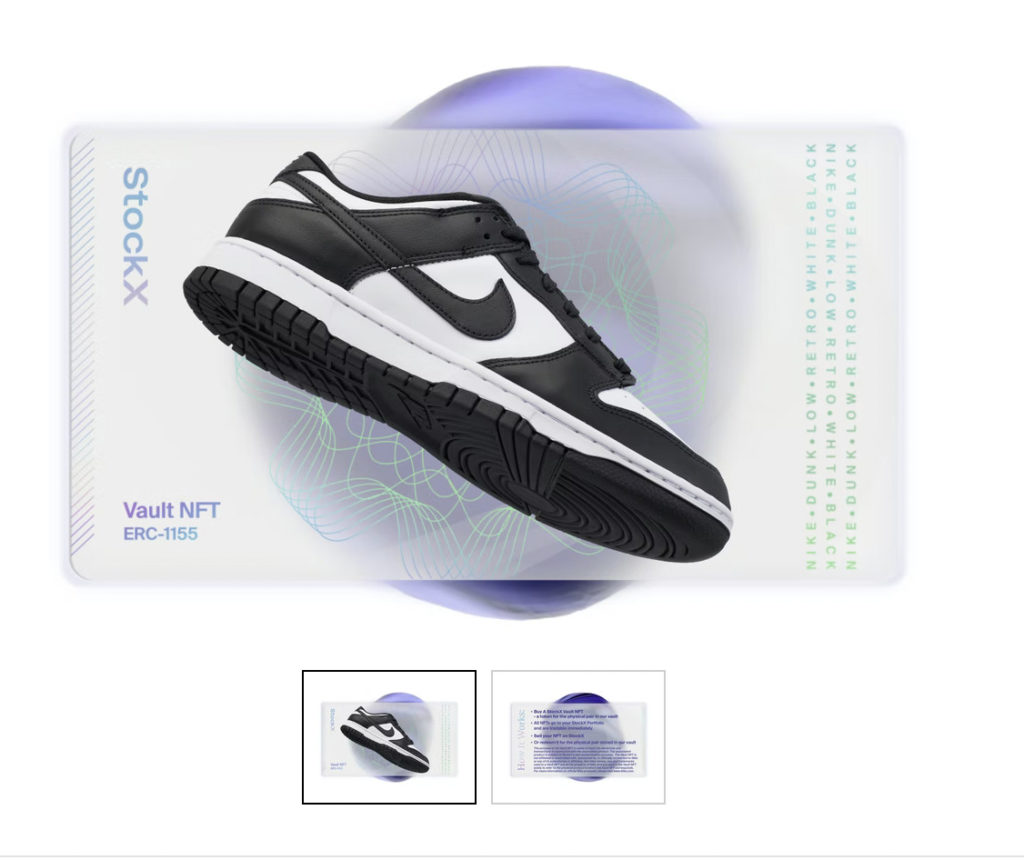“Nike’s requested leave to amend its complaint to include counterfeiting and false advertising claims against StockX underscores the uncertain interconnectivity between NFTs and physical products as well as the metaverse and real world.”
StockX, which describes its e-commerce resale platform as “[t]he current culture marketplace,” is primarily used by consumers to resell and buy sneakers, among other items. In January 2022, StockX announced its plans to launch The Vault, which uses non-fungible tokens (NFTs) to allow buyers to track ownership of physical products resold on its e-market and warrant their authenticity, including Nike shoes.
Swiftly thereafter, Nike sued StockX in the United States District Court for the Southern District of New York (SDNY), alleging that StockX’s use of Nike’s famous marks in connection with its NFTs constitutes trademark infringement. Nike, Inc. v. StockX LLC, 1:22-cv-00983-VEC. In its original February 3, 2022, complaint, Nike alleged that StockX mints NFTs using Nike’s trademarks without authorization and sells them to consumers, who either believe or are likely to believe that StockX’s NFTs are connected with Nike when they are not.
On March 31, 2022, StockX answered Nike’s Complaint. At the outset, StockX confirmed that its NFTs are not digital sneakers. This contention appears to be an attempt to distance the StockX case from another SDNY NFT case, Hermès Int’l v. Rothschild, Case No. 22-cv-384 (SDNY 2022). In that case, which is still ongoing, Hermès brought a lawsuit against artist Mason Rothschild after he began selling NFTs displaying the Hermès “Birkin Bag” using the designation METABIRKINS.
StockX further answered that its NFTs do not violate any of Nike’s rights for the following three reasons: (i) StockX’s re-sale of genuine Nike products is protected by the first sale doctrine; (ii) StockX’s use of images and names of genuine Nike products tied to “Vault NFTs” constitutes nominative fair use; and (iii) consumers are unlikely to be confused by StockX’s Vault NFTs.
Moreover, StockX argues that Nike’s lawsuit demonstrates “a fundamental misunderstanding of the various functions NFTs can serve,” including product authentication. In sum, StockX’s position is that its NFTs are digital assets utilized for authenticating asset ownership using blockchain technology. Each NFT includes a unique identifier and metadata about the associated asset that cannot be replaced or replicated. StockX argues that its “Vault NFT program enables secondary trading on StockX to be more efficient, track ownership of goods, and cut out unnecessary costs and fees for customers” because “each Vault NFT is tied to a specific physical good that has already been authenticated by StockX.”
Nike’s New Counterfeiting and False Advertising Claims
Because the blockchain code undergirding NFTs cannot be duplicated, companies can utilize NFTs to combat counterfeiting. StockX’s Vault NFT program provides an example. By tokenizing the physical products sold on its e-commerce platform with an official NFT minted for each one, a consumer need only consult the blockchain to confirm authenticity.
For an NFT program to successfully combat counterfeiting, however, the associated physical goods must also be authentic. In its Answer to Nike’s Complaint, StockX asserted that it uses “a proprietary, multi-step authentication process for every product sold on its platform,” which presumably includes physical Nike sneakers. In response, Nike made test purchases from StockX and determined that at least four pairs of shoes that StockX claimed were authentic were in fact counterfeit. Subsequently, Nike filed a Motion for Leave to Amend its Complaint to include additional causes of action against StockX for counterfeiting and false advertising.
Nike’s request to add counterfeiting and false advertising claims reflects a growing trend of well-known brand owners bringing such claims against resellers. For example, similar issues arose in the heated litigation between Chanel and What Goes Around Comes Around, also pending in SDNY Chanel, Inc. v. What Goes Around Comes Around, LLC, No. 1:18-cv-02253-LLS (SDNY 2018). In that case, Chanel, the renowned French luxury brand, sued What Goes Around Comes Around (WGACA), a luxury vintage retailer, for trademark infringement and counterfeiting, asserting that WGACA resells counterfeit Chanel bags despite claims of 100% authenticity. Although WGACA filed a motion to dismiss, the court sided with Chanel regarding its counterfeiting and false advertising claims. First, the court held that Chanel alleged sufficient facts to support a claim for direct trademark infringement arising out of WGACA’s sale of counterfeit Chanel handbags. Second, the court refused to dismiss Chanel’s false advertising claims arising out of WGACA’s unauthorized use of Chanel’s trademarks in “letters of authenticity,” marketing materials, and on its website. After cross-motions for summary judgment, Chanel’s counterfeiting and false advertising claims remain issues for jury determination in that case. Indeed, Nike relied on the Chanel motion to dismiss decision in its motion to amend its complaint.
Potential Implications
Nike’s requested leave to amend its complaint to include counterfeiting and false advertising claims against StockX underscores the uncertain interconnectivity between NFTs and physical products as well as the metaverse and real world. Navigating the legal world of NFTs can seem confusing because many consumers and brands are not well-versed in the technology, legal regulations are sparse, and no case has yet made it to a decision on the merits. That said, basic legal principles – especially trademark and other intellectual property laws – should apply.
Brands seeking to enforce their intellectual property rights in the metaverse or in real life should make efforts to fully protect their trademarks, trade dress, and copyrights, giving them the tools needed to prevent others from misusing valuable brand assets.

![[IPWatchdog Logo]](https://ipwatchdog.com/wp-content/themes/IPWatchdog%20-%202023/assets/images/temp/logo-small@2x.png)




![[Advertisement]](https://ipwatchdog.com/wp-content/uploads/2024/04/Patent-Litigation-Masters-2024-sidebar-early-bird-ends-Apr-21-last-chance-700x500-1.jpg)

![[Advertisement]](https://ipwatchdog.com/wp-content/uploads/2021/12/WEBINAR-336-x-280-px.png)
![[Advertisement]](https://ipwatchdog.com/wp-content/uploads/2021/12/2021-Patent-Practice-on-Demand-recorded-Feb-2021-336-x-280.jpg)
![[Advertisement]](https://ipwatchdog.com/wp-content/uploads/2021/12/Ad-4-The-Invent-Patent-System™.png)







Join the Discussion
No comments yet.